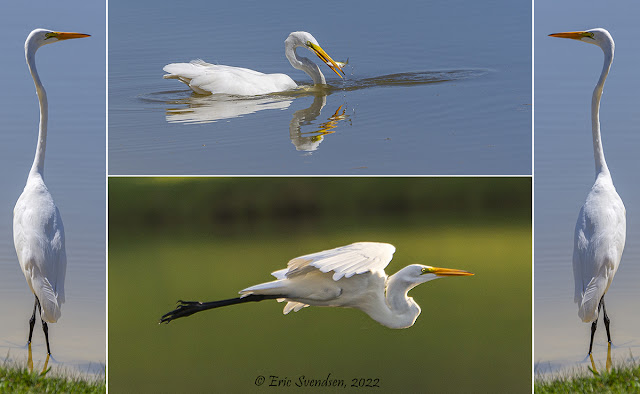Great Egret photographed in Tomball, Texas
I remember the first time I ever saw a great egret. I was kayaking with my family on a lake in Northern California. The far end of the lake was a considerable distance away; a large white bird was there wading through the shallows. Its manner was reminiscent of great blue herons. It had a long "S" shaped neck, had slow deliberate movements, and its eyes were keenly fixed just in front of it. I got some marvellous photos of it that day.
They rarely make it this far north, although in Kelowna I heard an excited lady packing a serious camera system saying she wanted to get a photo of one seen in the area I was hiking. Whenever I am in the southern US, I often find them on or near lakes engaged in foraging for prey. They, like all herons and egrets, are ambush predators that feed on fish, amphibians, and reptiles that cross their still form.
On the land, in the water, or in the air, these are stately birds that give one pause and capture attention. During the breeding season, long white plumes called aigrettes grow from their backs and give the birds an even more stunning appearance. Unfortunately, these plumes were highly sought after to adorn ladies' hats in the late 19th century. The great white egret became the poster child of the National Audubon Society, which was formed as a means to protect such birds from feather harvesting.
Great egret numbers have been on the rise since the culling stopped and they now reside throughout much of central North America well down into South America. The Audubon Society has the right idea; protecting our wildlife leads not only to a better world for them, but for us also.
Thanks for reading.
Eric Svendsen www.ericspix.com




Comments
Post a Comment